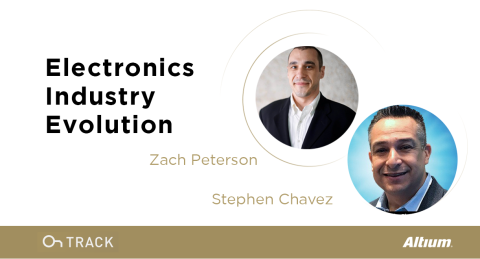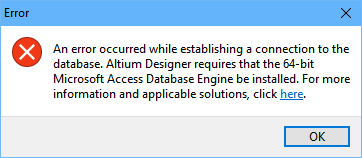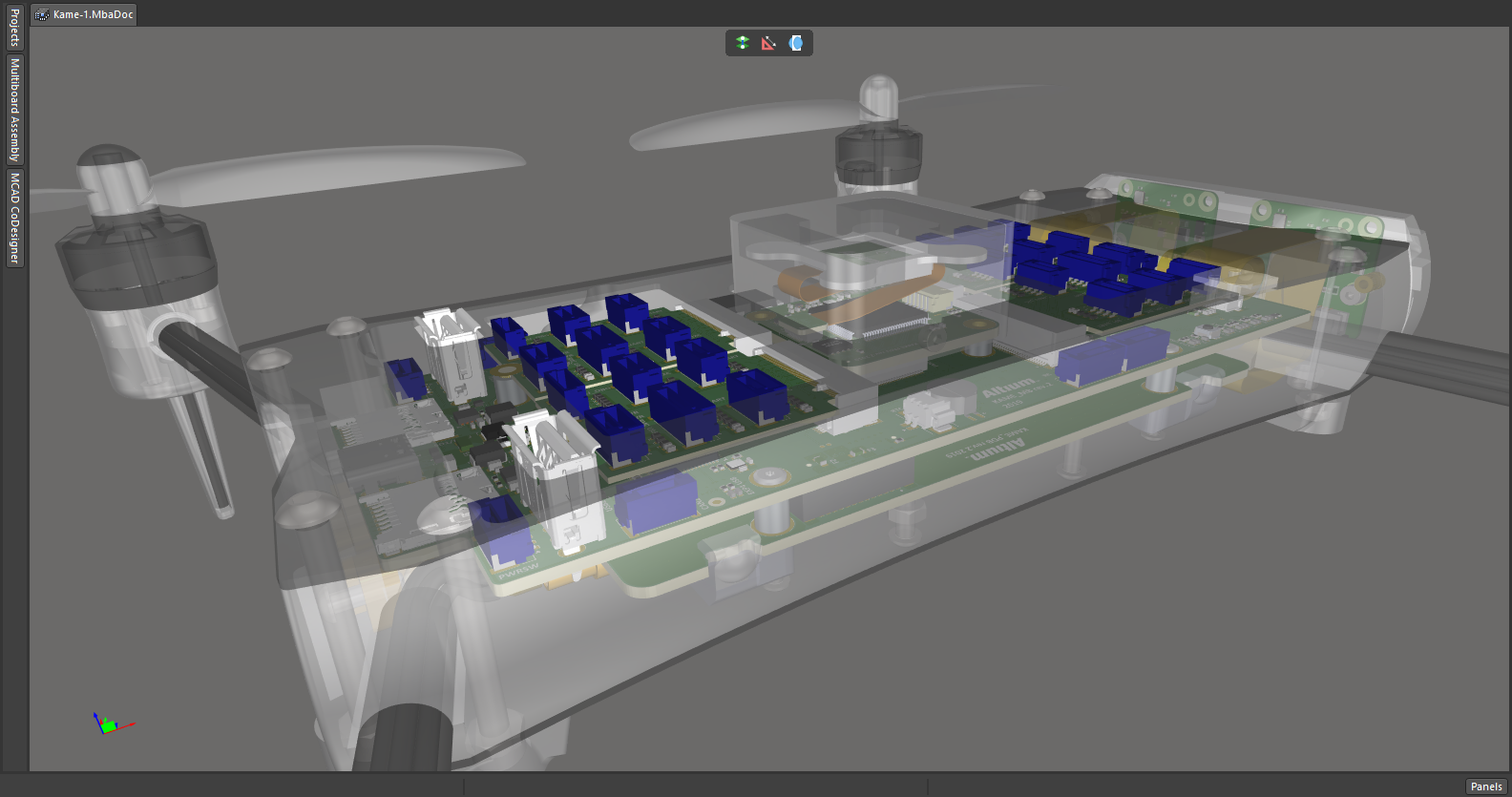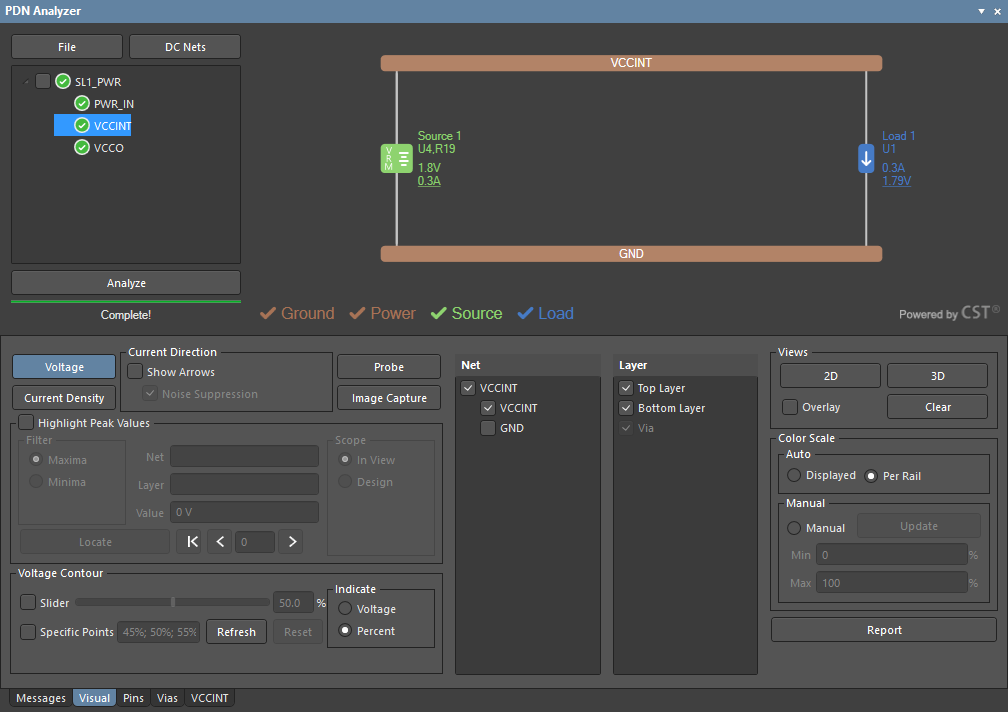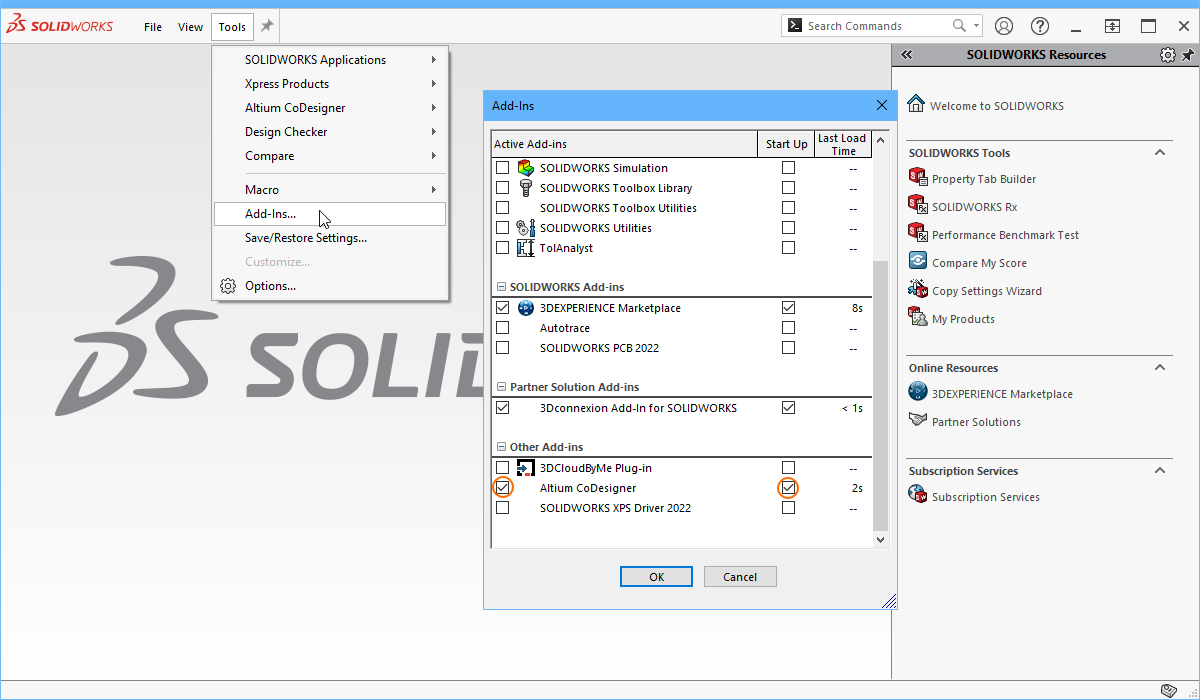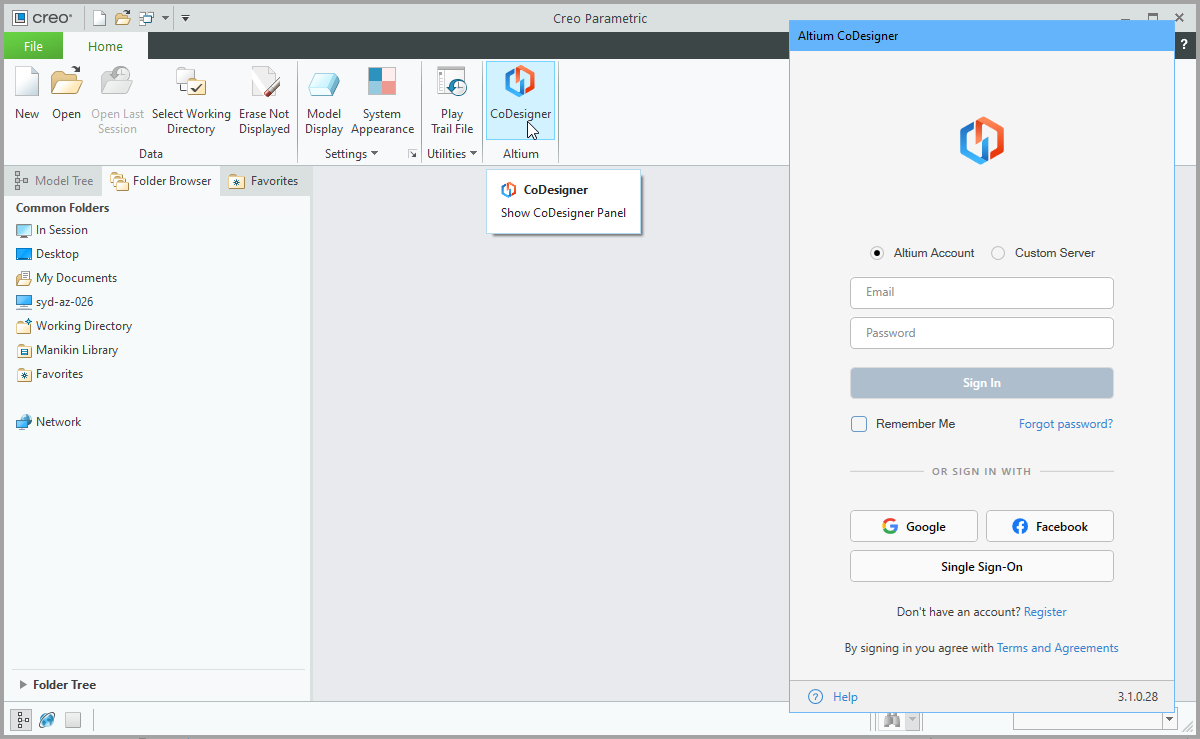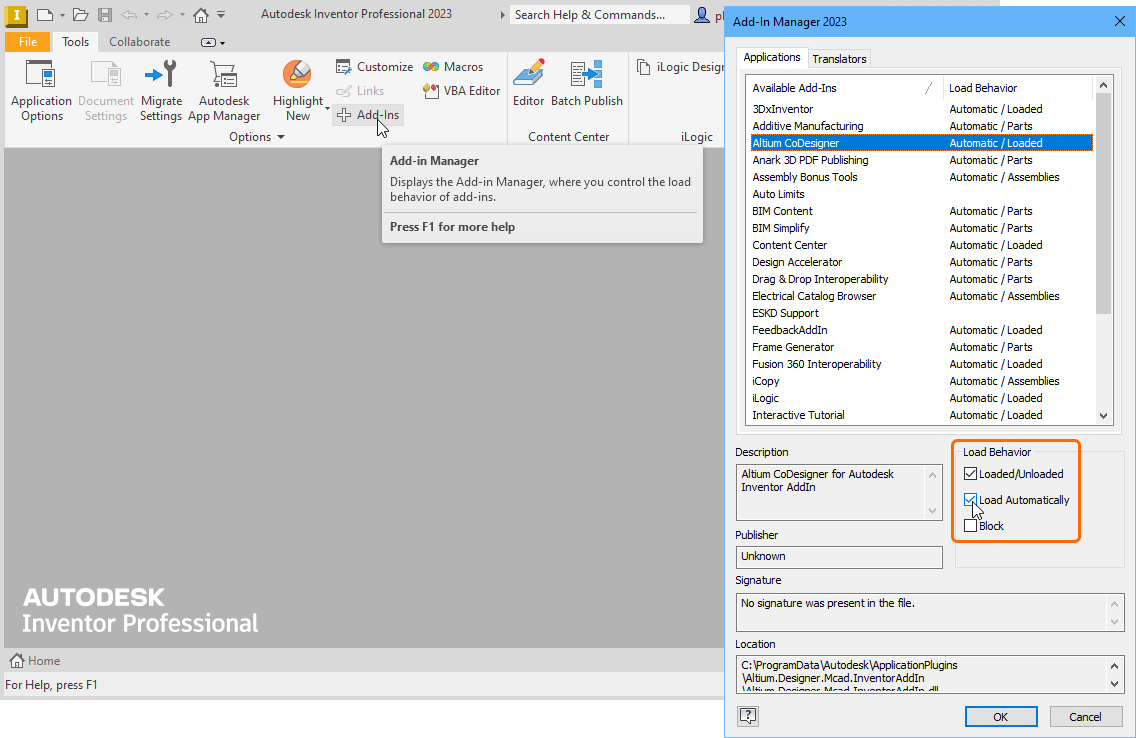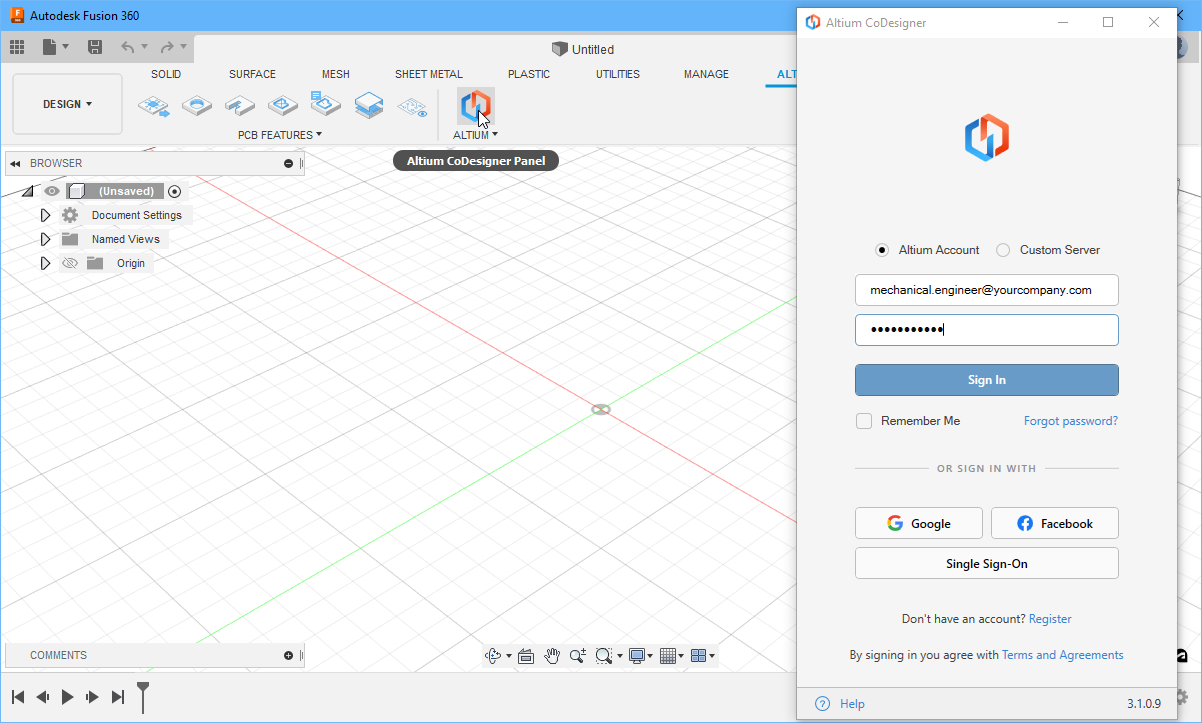Datasheet Reliability with Ben Jordan
Table of Contents
When are datasheets accurate and can we rely on them? Ben Jordan is back on the show to discuss datasheets and how to achieve reliability for your use case. We also cover an unusual question from the forum about gilding that you won’t want to miss. Ben always enjoys catching up with the Lounge Forum, and this week, one of our users, Tim Philips, posted a datasheet that he had come across for an inductor. Listen in to explore these topics in this episode of the OnTrack Podcast.
Listen to the Podcast:
Download this episode (right click and save)
Watch the video:

Show Highlights:
- The question: “I ran into an unusual datasheet from Murata, for a common mode choke and on page 7 it says: ‘Do not use a gilded pattern. The copper wire may cause open by dissolution of metalization’ - question is, what does ‘gilded’ mean?
- The answer: Gilded means gold plating - solder plated over hard gold just doesn’t work.
- This is a good example of how crazy datasheets can be, and it’s apparent that this was translated from another language.
- Lee Ritchey always says: “app notes, should be assumed wrong unless proven right”.
- This whole question of app notes and whether you can trust them is very important. For example application notes often advise separating the analog and the digital ground, to reduce electrical noise. Which is not necessary.
- Application notes are often produced by IC Engineers, who have no exposure to field theory and their conservative nature is aimed at the worst case scenario in various industries such as medical, aerospace and automotive where people’s lives are at stake.
- What’s the solution to unreliable datasheets?
- That’s where your training comes in. Starting with reference designs is good, but it’s just a starting point, you need to apply your engineering knowledge.
- You have to speak to applications engineers, who know products and did testing to compile the data–you have to verify.
- Measuring yourself, there are no shortcuts to actual measurement, you must have a test lab due to the ‘overkill’ of most sheets.
- Dan Beeker also says: “datasheets may be functional, but could result in higher BOM costs”.
Links and Resources:
Rick Hartley on The Importance of PCB Stackup
Dan Beeker presentation "It’s all about the space"
Eric Bogatin: AltiumLive talk on measurement
OnTrack Email: ontrack@altium.com
Trade In Your Outdated PCB Design Tool & Unlock 45% OFF Altium Designer today!
Transcript
Host: Judy Warner
Guest: Ben Jordan
J: Welcome back to the OnTrack Podcast.
J: I'm delighted to have back in studio Ben Jordan, my friend, and colleague. We always enjoy talking about manufacturing and design and all the implications. Today we're going to talk about reliability and we're also going to talk about the hazard of datasheets. When are they accurate? Can we rely upon them and some things that come up? And he takes a question off the forum that talks about gilding. You're going to enjoy this one and hopefully, have a few laughs. We'll see you on the other side.
Judy Voice Over: Welcome to Altium’s OnTrack podcast where we talk to leaders about PCB design, tackling subjects ranging from schematic capture all the way to the manufacturing floor. I'm your host, Judy Warner. Please listen in every week and subscribe on iTunes, Stitcher, and all your favorite podcast apps, and be sure to check out the show notes at Altium.com where you can find great resources and multiple ways to connect with us on social media.
Judy Warner: Welcome back to the OnTrack Podcast. Today, again, I have the pleasure of having my friend and colleague Ben Jordan. We always have great conversations around the office, and it’s super fun just to do this in front of the camera so you could witness the little rabbit holes we go
down.
Ben Jordan: Oh, it's fun and a little bit dangerous [laughter] but hopefully not today...
J: Yeah, so we promised that we would do sort of an ask me anything and again, you can always email us at ontrack@Altium.com to ask us questions specifically. But today we're going to be pulling something funny and odd that we saw on the forum that just took us down one of those rabbit holes. So Ben, why don't you share what you found on the forum?
B: Yeah, I like to catch up with our lounge forum pretty often, at least every week or so because there's always something very amusing going on in there. And often there are deep technical things going on too, which are fascinating to me as an engineer. But this week, one of our users, Tim Phillips, posted a really odd data sheet that he'd come across for an inductor. It's called a common mode choke. These are parts that go into power supplies for reducing conducted emissions out of the device and also clean up some of the common-mode noise going into the device. But that's not the point. In his forum thread, he started the post by saying, “I ran into an unusual datasheet from Murata for a Murata common mode choke, and on page seven, it says, ‘do not use a gilded pattern, the copper wire may cause open by dissolution of metalization.”
J: Say what?
B: And, even though it's written in English and it's using technically correct language - this is a good example of how crazy data sheets can be sometimes. To me, what that says, is the first language that the datasheet was written in was not English, and they translated it.
J: Where's Murata from, Japan?
B: I believe Japan initially, but they're, as far as I know, a global company. In the same sense as Altium is global, you know, offices in many countries, subsidiaries all around the place, doing different kinds of things, some of them make conductors, some capacitors, and they're probably in different locations but gilded…? And then this whole forum thread ensues on what does gilded mean?
J: What I love is what the guy said below him. Read that.
B: I’m bringing that up real quick, so there are a few interesting threads here, but...
J: The one that never have I ever... he was basically asking, has anyone ever seen this?
B: Brad Verlander chimes in, well, “I've never seen such a note in all my life.” And then Darren Moore comes in, “looks like they don’t like hard gold” and introduces another interesting word embitterment.
J: I thought I was smarter than Brad, and I thought he meant embrittlement. To which Ben Jordan said:
B: Well, embrittlement is the absorption of atoms in between the crystal lattice of the metal and in that creates embrittlement as a result of it.
J: I had no idea.
B: But I had to go look that up. I didn't know that before I read this thread.
J: Oh, you didn't know?
B: And I thought what are these guys talking about? I feel stupid now; gotta Google all this information.
J: You see, you shouldn’t have told me because I thought you actually knew what embrittlement was. I didn't know you’d already Googled it.
B: By the time I spoke to you, I had, so that's my secret. Don't tell anyone. I consult the oracle known as Google.
J: Yeah right, I know.
B: But I can't help but wonder if the person who wrote the original datasheet at Murata, maybe it was the engineer who developed that series of common mode choke parts, which are pretty
common, well-understood parts. If that magnetics engineer could see us now, and see our forum, and understand the kerfuffle that using different words has caused...
J: Well, until you told me, I wouldn't have thought about that it was written in another language and then translated, thus resulting in the word gilded.
B: It might. I mean, there's a chance it was written in English, and they just chose esoteric words.
J: If it was, that person should not write any more technical datasheets.
B: Probably not, what's the rule? The golden rule for business writing is to target... what age group?
J: Golden rule? No pun intended [laughter]. See, this is what we do.
B: Yeah
J: And then we went down the hole gilded... the only thing that I remember - well, there's two references to gilded. I remember it was a little off topic, but ‘gilding the lily’. So we actually went on Google and looked that up, but that’s sort of over-embellishing something that's already beautiful. And what was the other one about the bird in a gilded cage or something? You mentioned a Rush song?
B: Yes, there's a Rush song called Limelight, where there's a line about how being a famous musician is like living life inside a gilded cage. From the outside, it's all amazing in gold and shiny, but you're still in a cage.
J: So, Ben and I - he showed this to me, we had a good laugh and then started going down, like I said, this rabbit hole together. And then I remembered Rick Hartley, for those of you in North America, you’re probably familiar with Rick speaking at PCB West and Design Con and different places. He always starts out his talk, when he's talking about field theory particularly, he always has this quote, and it made me laugh the first time I heard it, he said: “I see app notes should be assumed wrong unless proven right”.
B: Guilty until proven innocent.
J: Yes, and that was a quote by Lee Richey, and he said he's been using that quote for twenty-five years.
B: I've read it in his books.
J: Really?
B: Read the same thing.
J: So then again, continuing down this path - I emailed both he and Dan Beeker; Dan Beeker works for NXP Semiconductors. he's talked about IC app notes and then I asked him, “Ben and I want to talk about data sheets and app notes, what say you?” and they brought up a couple of things that I think you... well should we finish discussing where we went with this note and what we decided it really meant?
B: Well, we did come to a conclusion, and you can look this up on the forum too. We'll come back to that at the end of the podcast. But there was some clarification obtained in the long run, but it took a bit of back and forth. But this whole app note, and can you trust them, is actually a really important question. And some of you may know my background in engineering is more on the computer system side. I studied hardware design, but also programming and software, and I came to Altium originally as an FPGA designer and I got my ‘PCB chops’, you might say while working at Altium over fourteen-and-a-half years. So, in the first year, I was working with this company, I got to design a prototype board for a video A to D converter so it would ally to plug a composite video signal in, and convert it to a USB. I think that the board had USB and video input on it, actually. But the analog to digital converter for sampling a video stream and turning it into a digital format that could be processed inside an FPGA.
J: By the way, pause one second. For those of you that are young designers, you may not recall. We do not make hardware now, but there is a time where Altium made FPGA boards, right?
B: Yeah, we had a product called the Nano Board. We had a whole team of hardware designers at first in Hobart, Tasmania, then in Sydney and then in Shanghai, China. And then that sort of product line was retired.
J: And a lot of Protel or people that have been with Altium Designer® as a tool for a long time, will remember that, but some of the younger ones might be going, “wait, what, you guys designed hardware?”
B: We did, and that might be one reason that I could say that we have a user-friendly UI, I mean, that's subjective, and anyone can argue over that; but honestly, we had a bunch of internal feedback from real designers going on daily with R&D, I remember when I was back in Sydney in 2009/2010, we had the hardware team sitting right there as part of R&D, along with all the software developers in the same room...
J: Wow, what a dynamic.
B: So, if they encountered some really irritating bug, they would go and talk to the guy, and say, “let me show you this thing. You go here, click there, do that, now you see you get this crash” or whatever, so, that was an interesting time, and I think a lot of good things fell out of that. And some of our hardware developers ended up forming what became the content team that developed all the library components that our customers enjoy. So some of those people are still around in different parts of the world, contributing to all the symbols and footprints that you can get on Octopart®, for example. But in that process, I got a chance to design a board for a prototype for a video peripheral for this nano board/FPGA board and I read the app note, and followed the app note, which said, “You separate analog ground, the video ground and the digital ground” and this app note, this is something that Dan and Rick and others talk about a lot in app notes, they frequently say, separate your analog ground and your digital ground because they're concerned that there's electrical noise in the ground from the digital circuitry, and you don't want any of that going anywhere near your analog inputs to make your input noisy. But the prevailing wisdom now is, you just have one ground and you don't split it up, and I got this hard, firsthand, because here was I, coming in wet behind the years, I'd never done hobby PCBs up until that point, really. And I just followed the application note and separated my grounds and then the experienced, professional PCB designers on the team - that was their first criticism of my design. It functioned okay, but they shot it down in flames as being a poor design because, “why did you separate the grounds - it's complicated and the application notes are usually wrong.”
J: [laughter] To Lee Ritchey and Rick Harley’s point, right? But let's talk about why that happened. So, Rick had said - I actually talked to Rick Hartley on the phone last night. He goes ‘I see... app notes and datasheets are both produced by IC engineers, not board engineers and usually not people who understand field theory, right? And it makes sense why sometimes you have trouble with your datasheets.
B: Yep, and I've heard, and this is probably not always the case, but I've heard some people make statements like the datasheet is really just the marketing vignette for the part. Maybe, it's got to contain factual data, because people will legally hold the manufacturer responsible for what's printed in that. If you design that into something and it doesn't work as advertised on the datasheet, then in theory, you could hold them to task over that.
J: But that's a little like - I'm just putting myself in a designer’s shoes - so, you're working from unreliable datasheets. So Ben Jordan, how do you work around that? What's the solution? And then you're getting people having words like gilded on their datasheets. And this is like, what are you talking about? And gilded with what? By the way, let's just talk about gilding. So we're guessing they're talking about gold. But it could be silver.
B: It could be.
J: I mean, but is gilding only relative to gold? We’ll have to Google that one later.
B: That's a good point and a good question. So, I've designed with a number of different chips and, you know digital land, analog land, mixed-signal land, and what I've found is almost always, the datasheet may contain everything you need, but you need more information. So you turn to app notes, or you will download reference designs. This is a pretty typical thing to do, and everybody is so under the gun to get things designed these days, you almost have no choice but to take it on face value that if you download the schematics of the development board from the manufacturer...
J: Yeah, but that's a simple board...
B: -they can be, or they can be really complex. So, let's say I was designing an audio signal processing product, and I'm using some sort of digital signal processor, and so I have a development kit from the manufacturer. There are tons of these out there, but they're actually... I had one DSP development kit, that had something like sixteen analog inputs and outputs on it, like way overkill and the product, the end product that I'm going to design, only needs two inputs and two outputs. So, you know, for stereo audio - two in two out - and where do you draw the line? They're going to have, for a product like a processor or digital signal processor, they're going to cover a lot of bases or use cases in the application in the development board, or the eval board whatever you’re using. So, you've got that as a starting point for your own hardware design, your own PCB design - you can start with that, but sometimes figuring out what are the bits that are actually needed, that we're actually using, and what you...
J: Because they're preparing for every eventuality?
B: -Yeah, they're covering, in true engineering style, every corner, but most end products don't need to cover every corner.
J: Right.
B: So, that's the question. Where do you draw the line and decide? How do you figure out what you need and what you don't?
J: Yeah.
B: And it really depends on the quality of the application note in the reference design that you're working with. Unfortunately, it's like how long is a piece of string, to me anyway. In the case of that video O to D converter I was talking about before, that request of the test engineers and in the application to separate analog ground and digital ground was completely unnecessary. They go overboard, and that's a thing.
J: Right, so when Rick and Dan emailed me back, they both talked about that they are conservative in nature, again to your point, maybe because of legal implications or accounting for every eventuality, or whatever. But that really doesn't get you to necessarily what you want to do, right? So, how do you get to a point where you personalize it?
B: That's where I think being an engineer, being a designer, that's where your training comes in really because anyone can take something off the shelf that's already there, and it already works, and all you have to do is program it differently. If you're going to do that, you can. There's a lot of good prototyping platforms out there, like Arduinos of various shapes and sizes or Raspberry Pi – Raspberry Pi actually not, because it's not open source so they don’t give you the PCB design to start with. But it's more like those are computing platforms which you reprogram - your secret sauce is all in the software. For most of us, there's a bit of both. We need custom hardware, and we need custom software, and starting with these reference designs is a good place to get things working. But that's...
J: That's the starting point.
B: That's the starting point. You need to apply your engineering knowledge, and it's the same with datasheets. They'll make all these claims as to operating values, voltages, currents, temperature ranges and again, to your point, and to Dan’s point, they're always very conservative. I've made plenty of little devices and gadgets that used parts outside of their normal operating conditions - way outside - and they function just fine - if you know what you're doing, you can push things, and you can use them in weird and wonderful ways. I'm not advocating people do that...
J: No, but I'm thinking, you're making some pimped out amplifiers so you could play guitars with it; it's not a jet.
B: Exactly. If it blows up, it's going to disappoint, but it might actually be fun.
J: Well, it won't kill anyone.
B: That's a good point. There's different markets here. There are things where somebody's life could be on the line. Medical, airspace, automotive; automative is a really important one and I think when you read a data sheet and you look at those extreme values, ratings, and all of that stuff, the safe operating area of devices, that's what they're targeting. They’re targeting that worst-case scenario where the environment’s very harsh, it's going into space and the temperature extremes are the greatest and those are there to tell you; this is what we guarantee it will work to. We guarantee these values and you must check the errata because sometimes they make a mistake and have to update the document.
J: I don't know, I again, I come from the fabrication side so, I always imagine you engineering people; this being such a fixed, hard, science, data - so it is just bizarre to me to think about. Datasheets - they're put together like engineers, you know - covering all the bases. But I don't know, I just assumed, really that data sheets would be kind of flawless?
B: They're close - I think in our industry, they’re as close to flawless as you could hope for, but there’s still errata and they’re still ultra-conservative. So, you need to talk to your applications engineers who know those products and who are often the ones who did the testing for the semiconductor in the semiconductor lab, and the ones who did the testing to write down those values and compile the data for the datasheet, talk to them; get somebody's email address, verify things. Find out, “Hey, I know the datasheet says the temperature range is minus twenty-five to plus forty, but could I reliably use this part to minus eighty-five”? And they'll probably say, “Yeah, absolutely”. They may not, they might say, “well, you have to buy the extended temperature variant, which costs a little bit more”, but that's when you're actually paying for some warranty at that point, that's what you’re getting.
J: I see.
B: And, the other side of this conservative datasheet, sort of notion is, you have to measure it like there's no substitute for actually, getting a bunch of them and measuring them yourself. You can't always do that. Not every part, some complex parts like microprocessors won't lend themselves to that. But there's a lot of things you can do, and really, there are no shortcuts to actual measurement. You've gotta have a lab, and you've got to do stuff in the lab to have your own confidence that what you’ve designed is going to work.
J: I'm going to read this. So, this was an email I got from Dan Beeker from NXP this morning, and his concluding sentence said, “device specifications are conservative by nature,'' which we said, “the supplier must cover all aspects of possible use to protect themselves from liability,” and we said that and again, “it's important to compare these specifications to your requirements and for critical elements, even do your own testing.” So, you pretty much just summed up what Dan Beeker’s saying.
B: Almost like I read that email right? [laughter] But I would have said the same things. I mean, it's true. And then, you know, and don't take it from me, take it from Dan who’s a known expert in this field and is constantly calling out flaws. It's part of his actual day to day job, is to correct data sheets and app notes for NXP; that's part of what he does.
J: Right. I wanted you to comment on this too Ben, what you thought. He also said “data sheets and app note schematic examples are notoriously conservative,” we said that; “while they may be functional, though the prior results in higher BOM costs.”
B: Yeah, and that goes back to what I was mentioning before - my sort of long long-winded way of saying the same thing is, you start with a reference design or an eval board, and it's covering every possible use-case of the part. So you can test and evaluate it for yourself. But at some point you're going to take this schematic and maybe the PCB as well, for that eval board or prototyping kit or whatever, from the semiconductor company and modify it to become your own product or your own module, and where do you cut things out? And this can go to the extreme of many, many people who have done offshore manufacturing know that this goes on. There are optimization teams at some contract manufacturers that do the assembly for you. You give them a test criterion and they do bare board and in-circuit testing. And now, before they go to full-scale production with all the pick and place in automation, they’ll take your prototype and start removing capacitors.
J: You told me this a while back, and I could not believe it!
B: One by one until it fails, and then they put the last one back on. And this is going to be happening a lot right now because...
J: Those capacitors are precious right?
B: Yeah. I mean, who knew the second most common part after the resistor was going to be a hot commodity like that?
J: Like we'd run out of pennies, right? It's crazy but I remember you telling me about them plucking those off until it failed and putting the last one on!
B: It’s true. An example of what Dan is talking about is, I've looked at a lot of audio circuits, just because I'm a musician and I'm into audio electronics. So, that's what I do on nights and weekends when I have a spare moment, and I see a lot of reference designs where they're using really fine values of resistors everywhere. They'll have a power amplifier circuit and an engineer has calculated the exact resistance values needed to the second decimal place. And then they'll go to the most granular resistor range which is E192 or, there's even one more granular that I believe, it's like an ISO standard resistor value range, where they're all within point five of a percent.
J: Oh, wow.
B: You know, it's crazy and so they have always, almost exact resistance values everywhere, and for most of the time it's totally unnecessary, it's total overkill, and those parts become hard to get and expensive. And that's what he's talking about, but that's just one example. Another is, again going back to the DSP development boards I've used in the past, that had a lot of additional memory, for example, they had extra dynamic RAM chips on them. Way overkill for what I needed - I could record ten seconds of audio at a normal sample rate and it's way overkill - you only need a second-and-a-half of buffer size for audio samples. So there may be three times the amount of RAM chips on the reference design than what I actually need for my application. That's an obvious example but it goes from that kind of level, all the way down to the capacitors, where in a contract manufacturer’s scenario they may be taking them off the board until it fails, and then putting the last one back on and saying, That's what we're going to make, just to save money.
J: That's crazy.
B: You've seen it in PCB manufacturing - it's the same - people way over-spec.
J: Oh, they do. They over-spec materials and we're always talking about…
It’s got to be exactly this thickness dielectric and you’re like, hmmm we can get what you need using our processes and it's going to be within a percent or five percent, and that will work just fine.
B:Or they may need to have copper heavier or something in one area, but they just do it to the whole board...
J:Well yeah, why?
B:Why, because you can still do it selectively?
B: Rick, I remember him telling me an example of a project that kept being stalled and they had eight layers of copper- no, it was eighteen layers, and the designers thought they needed all these plane layers for power and ground and shielding and all sorts… and that was just way over-conservative. And he reduced it down to four; two signal - two plane; worked beautifully, routed easily.
J: Speaking of which, I'm going to share this talk in the show notes because Rick Hartley, that was in his stack up talk, was it not at AltiumLive? At least part of that, he talked about it.
B: He's done so a few times.
J: So I will make sure I'm going to share talks both from Dan, who talks about ‘all about the space’ and Rick Hartley, who talked about stack-ups that are nutty and why they're nutty, you know, and again, you know...
B: -and lane tuning is an example of that, right? Like people think that they have to tune memory lanes to within one mil. Well, how many picoseconds is one mil on a PCB?
J: Exactly.
B: A fraction of a picosecond, right? Your memory bus and timing is never going to need that. Not in current technology. You've got way more room to breathe in...
J: A little bit right...
B: one exampleYou don't need to be dead on. And often with some of these products, you can slow down the clocks and slow things down so that you don't need to go to that degree of length tuning. That's a good example, because, if you have to tune a bunch of traces to that level of accuracy, it's going to take up a lot more space on the board. Tons more space, and then you'll need more layers.
J: Yeah, I think, too when we design on these screens where everything's, like, blown up so big that we really forget what one mil looks like in real life. I think our hair is like two mills or something. I don't know, it's ridiculous...
B: My hair is zero [laughter] I have zero-mil hair, you can see it…
J: So you have perfectly tuned hair [laughter]
B: Yeah - it's like my hair is linked to zero.
J: Oh, you are funny! you could say it, I won't say it about you - oh my gosh! So, thank you, that actually helps me relate more when you talk about the board fabrication or CM side where things are over-specified. That helps me understand it because again, I think of engineers being so uber precise.
B: You know, this reminds me of a joke that my father keeps telling me. He's an accountant and the first thing he says is - ‘cause I'm an engineer; he's an accountant - that we’re mortal enemies. [laughter] I love you, son, but you're a mortal enemy.
J: Wait.. don't both include math?
B: Engineers and accountants, they're always at odds, he says, “you engineers, you want everything in bloody stainless steel”. But it's funny because it's true. Engineers - we want things to be perfect. We love excellence, engineers value excellence and that’s why a lot of engineers are into music and things like that because it's a mathematical thing that is in your mind.
J: But it requires a certain precision, and engineers value precise things. We just see the beauty in that.
B: But your datasheets and app notes are out of control and, well, you just don’t want to gild things. That's what I'm saying the irony…
J: That’s why I chose the word gilded [laughter]
B: But that's what gets me, is I experience engineers as excellent and I think of precision. So when I think of the irony of datasheets and app notes, I'm like, “wait, what?'' But now you know what's happened, is you’ve ‘precisioned’ yourself into a corner with the ‘every eventuality and the liability.’ So let's just kill it.
B: It happens, but it happens all the way through the value chain. People will over-spec parts, we'll say - you know engineers are often pragmatic too - so if it comes to something like temperature range, they'll say, “well, where is this product going to be used? Is it under the hood of a car or is it a consumer device in somebody's pocket”? But often we way over-spec, things, we say we want all the resistors to be half of one percent tolerance and most of the time that's totally unnecessary. And we just end up with a bloated, expensive product. If we go too far with that.
J: Yeah, the over-speccing, when you're doing prototypes is tolerable. If you take this into production, it'll kill you.
B: Yeah, I see it a lot with devices like FPGAs and their decoupling is a good example. People have no real good idea what kind of decoupling capacitance is going to be needed for an FPGA, because you can't predict how much energy and what kind of signal switching, and all of that - it’s a complex system, and honestly, the best approach to that is you go overly-conservative for your prototype. Then when you get your final firmware running in it, then you test it and you take things away until you have enough but not too much, plus some margin for safety and you do all your testing with that. And then you go to production. But again, it's like you can't avoid getting into a lab and doing testing and experimentation. You've got to do it or you'll end up with a product that no one can afford.
J: Yeah, data by definition, is measured, is it not?
B: It is.
J: So there you go.
B: And we love test equipment. We're all about the test equipment as engineers you know, it's a good reason to go out and get a new oscilloscope, I think a logic analyzer.
J: Eric Bogatin would like that at Teledyne Lecroy. Oh, I'll share that one too, because that's a measurement, right? And, at AltiumLive he also taught how to use an oscilloscope properly. I never actually had the opportunity to watch that.
B: And some of us need a refresher right?
J: Yeah.
B: Because the technology grows and changes. So to come back to gilded, there was a follow-on thread and actually, in the end, they emailed the Murata technical support and they came back saying yes, gilded means gold plating. So, if you have hard gold or immersion gold with that part they don’t recommend it because of the diffusion of gold into the copper and it can disintegrate. The part can actually fall off because it's a heavy part. Now, I've actually seen that. I remember doing an IPC training years ago and the teacher actually brought in a board with a bunch of d packs, that were soldered over hard gold, and he said, just grab one of those d packs with your fingers and pull it off. That was soldered onto the board and we could literally just grab them, and they would come off because the hard gold plating and the solder don't play well together. So, there’s metallurgy, this is the material science of PCB Assembly, and maybe that's another topic for another day.
J: Another topic, another time, because they're all that, like surface finishes and what metals play well together.
B: Yeah, what and where should you use them and with what other components? And what are the limitations?
J: And it's a never-ending web. If this then that, if this then this, right? And that's a tricky one. So, well, Ben, this has been fun.
B: Has it? [laughter]
B: Well, it was - I had fun.
J: I had fun, I hope you had fun going down the gilded rabbit hole?
B: The gilded hole - gold plated vias. That's what that means. The golden hole. [laughter]
J: Yep, that's it. So, this is the kind of bizarre thing that Ben Jordan and I talk about when we're not busily doing our jobs here at Altium. So, as I said, I'll share some things relative to the things that Ben and I have talked about - I'll certainly share. Thank you, Rick Hartley, and thank you so much, Dan Beeker, for emailing us and filling us in and helping us, kind of understand these crazy issues. And I hope for our listeners this has been helpful. Why data sheets and app notes are the way they are, and I hope you had some fun along the way? So thanks for joining us today. We look forward to hanging out with you next time when Ben and I find some other goofy things to talk about. So thanks for joining. Are you going to go out with me again? So, we'll see you next time. Until then, always stay on track.

